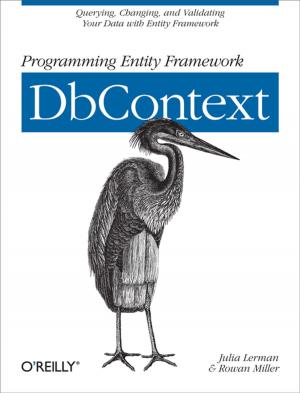Java, 3rd ed.
Nonfiction, Computers, Internet, Web Development, Java, Programming, Programming Languages| Author: | Hayg Bivo | ISBN: | 9781370118281 |
| Publisher: | Hayg Bivo | Publication: | September 30, 2016 |
| Imprint: | Smashwords Edition | Language: | English |
| Author: | Hayg Bivo |
| ISBN: | 9781370118281 |
| Publisher: | Hayg Bivo |
| Publication: | September 30, 2016 |
| Imprint: | Smashwords Edition |
| Language: | English |
Many programming languages we are familiar with today are known as high-level programming languages. High-level programming languages such as C#, Python, and Java resemble native languages and fall into either of two major categories: the object-oriented approach or the procedural approach. In this text, we attempt to solidify our understanding of the basics of the Java programming language. As a high-level, object-oriented programming language, Java has become one of the most popular languages for beginners and expert programmers alike – and for good reason. Java not only offers a depth of tools for the programmer to use, but it also works across many different platforms. What began as machine and assembly languages (also known as low-level languages) culminated in increasingly more approachable and powerful code.
This text is designed as a review book, but it can also be used as an introductory complement with another textbook. The rationale behind this book is that we learn by solving problems ourselves, rather than by being told exactly what to do and how to do it. Thus each chapter will contain several exercises of increasing difficulty, which you should attempt before looking at the source code. Throughout the lesson, we will be able to understand why the code works and how to write similar programs using what we have learned. Chapter 1 (Java Basics) covers the proper use of syntax and control statements. Chapter 2 (Classes and Methods) explores the importance of writing methods and explains when and how they should be applied. Chapter 3 (Arrays) introduces arrays and establishes their necessity.
Many programming languages we are familiar with today are known as high-level programming languages. High-level programming languages such as C#, Python, and Java resemble native languages and fall into either of two major categories: the object-oriented approach or the procedural approach. In this text, we attempt to solidify our understanding of the basics of the Java programming language. As a high-level, object-oriented programming language, Java has become one of the most popular languages for beginners and expert programmers alike – and for good reason. Java not only offers a depth of tools for the programmer to use, but it also works across many different platforms. What began as machine and assembly languages (also known as low-level languages) culminated in increasingly more approachable and powerful code.
This text is designed as a review book, but it can also be used as an introductory complement with another textbook. The rationale behind this book is that we learn by solving problems ourselves, rather than by being told exactly what to do and how to do it. Thus each chapter will contain several exercises of increasing difficulty, which you should attempt before looking at the source code. Throughout the lesson, we will be able to understand why the code works and how to write similar programs using what we have learned. Chapter 1 (Java Basics) covers the proper use of syntax and control statements. Chapter 2 (Classes and Methods) explores the importance of writing methods and explains when and how they should be applied. Chapter 3 (Arrays) introduces arrays and establishes their necessity.















